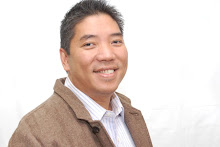By Ambeth Ocampo
Philippine Daily Inquirer
First Posted 00:55:00 10/01/2008
“If you are lucky enough to have lived in Paris as a young man,” Ernest Hemingway wrote, “then wherever you go for the rest of your life, it stays with you, for all of Paris is a moveable feast.” If Hemingway was right, then the Filipinos who lived or visited Paris in the late 19th century took the City of Light back with them to the Philippines.
All roads led to the Exposition Universelle in Paris in 1889. As a commemoration of the glories of the French Revolution of 1789, the Expo was not just a look into the past but, more importantly, it was a look into the future. While the Expo is no more than a faded memory today, one of the engineering marvels of that time, the Eiffel Tower, much reviled in its day, has since become the iconic symbol of Paris. Filipinos who gaze upon this landmark seldom remember that Jose Rizal was one of the first Filipinos to see the Eiffel Tower. Unfortunately, he did not mention it in any of his diaries or letters because he was so busy planning an academic meeting during the Expo.
Rizal envisioned an “International Congress of Philippinologists,” a gathering of European scholars studying, interested in, or merely in love with the Philippines and Filipinos. The best representative of this group was Ferdinand Blumentritt from a tiny town called Litomerice, then part of Austria but now part of the Czech Republic. Blumentritt never set foot in the Philippines yet was an authority on the country because of the numerous articles he wrote on its history and ethnology. Unfortunately, the planned congress did not materialize, but Rizal’s program outlined a thematic historico-cultural study of the Philippines from past to present and is still current today; it is known in academic circles as “Philippine Studies.”
Simply because he left a lot of papers, Rizal is the most studied of our heroes. But if we care to take a closer look at his correspondence with expatriate Filipinos dedicated to reforms in Spanish Philippines, we will find the names and addresses of other less-known Filipinos who lived or visited France.
Almost all the places associated with Rizal have been identified and located; in some, bronze historical markers have been installed.
But what about the other Filipinos? In my visits to Paris, I travel with a city and Metro map in search of the following places:
• 45 rue de Maubeuge, where Valentin Ventura, who financed the publication of “El Filibusterismo,” lived; it’s an address that Rizal also used;
• 65 Boulevard Arago, painter Felix Resurreccion Hidalgo’s address, which Juan Luna also used when he moved to Paris after winning the gold medal in the Madrid Exposition of 1884 for the “Spoliarium”;
• 78 Faubourg Poissoniere, where Justo Trinidad lived;
• 5 rue de Debarcadere, where Isabel Tuason resided; and
• 14 Avenue Wagram, where Felix Pardo de Tavera lived.
Luna and Hidalgo established ateliers in 65 Boulevard Arago in a building called the Cite Fleury, which still stands and is rented out exclusively to artists, painters and sculptors. We can locate the building but we do not know which apartments they occupied.
Trinidad and Pardo de Tavera studied medicine in the Sorbonne, with Trinidad taking other courses, in philology and Oriental languages.
Antonio Luna, before he became the greatest general of the Filipino-American War, was a pharmacist who took postgraduate courses at the Institut Pasteur. When he returned to the Philippines, he undertook pioneering research on the cleanness of Pasig River water and the purity of carabao milk.
A piano sheet music by Julio Nakpil, composer of the “Katipunan” and the “Philippine Revolution,” was printed in Paris. Marcelo H. del Pilar, editor of La Solidaridad, partook of a Filipino meal in the Paris home of Juliana Gorricho, who served her homesick guests “lechon” [roasted pig] and “sinigang” stew. They even ate “kamayan” [with their fingers] in Paris a century before the famous restaurant of the same name opened in Manila.
Gorricho’s recipe book is preserved in the Pardo de Tavera Collection of the Rizal Library in Ateneo de Manila University. It may seem like a trivial historical document but aside from recipes, it also lists the dates when certain food was served and who the guests at her table were.
It is odd that nowhere in the writings of our heroes do we find a detailed description of the Eiffel Tower, but the historical connection remains because, in the listing of Gustave Eiffel’s work, there is mention of a steel church, the only one in Asia, in Manila. The Eiffel company exported pre-fabricated bridges and churches worldwide. A few of these bridges and one such church were exported to the Philippines in the 19th century. The only one that remains is the all-steel San Sebastian Church in Manila. To date, people refuse to believe this connection but have not proven otherwise. If we look hard enough we will see France through the eyes of our heroes and traces of France in our history.
* * *
This Saturday, Oct. 4, at 10 a.m., I will deliver, in the National Museum, a lecture titled “Hidalgo, Bustamante, and the Big Black Wolf.” The lecture will begin with the important anti-clerical painting that now hangs in the National Gallery. It will branch off into the other stories the painting has inspired, including “La Loba Negra,” a work once attributed to Fr. Jose Burgos but later exposed as a forgery.
* * *
Monday, October 6, 2008
Subscribe to:
Post Comments (Atom)

No comments:
Post a Comment